Wycoller
OS grid ref:- SD935395
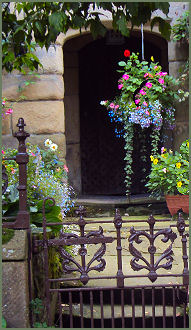
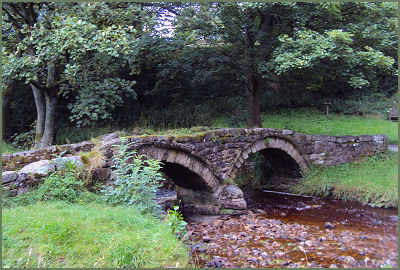 The charming and highly characterful Lancashire village of Wycoller lies in Wycoller Country Park and is situated approximately 4 miles to the east of Colne.
The charming and highly characterful Lancashire village of Wycoller lies in Wycoller Country Park and is situated approximately 4 miles to the east of Colne.
The village was almost deserted around the middle of the twentieth century, but has made a recovery since the 1970s.
Wycoller has a long history, dating back to before the tenth century, the name derives from the Anglo Saxon 'Wic-Alr', which means dairy farm among the alder trees.
The village is now a conservation area, and closed to outside traffic. 'The Friends of Wycoller' were established in 1948 in an effort to preserve the character of the village and Wycoller Hall. Lancashire County Council purchased the land from the Water Authority in 1973 and the village and surrounding countryside were designated a Country Park.
The delightful main street is lined with characterful period stone buildings. Visitors can access the village via a short walk from the nearby car park.
. A variety of ancient bridges cross Wycoller Beck, including 'Pack-Horse Bridge', a twin arched bridge in the centre of the village, which once linked the weavers of Lancashire with the wool merchants of Yorkshire in the long trail made by tradesmen between the two counties. It is believed to date back to the thirteenth century and is also called Sally's Bridge. Clapper Bridge stands close to the ruins of the old hall and probably dates from the late eighteenth century.
Wycoller and the Cruck barn which serves as a Tourist Information Centre
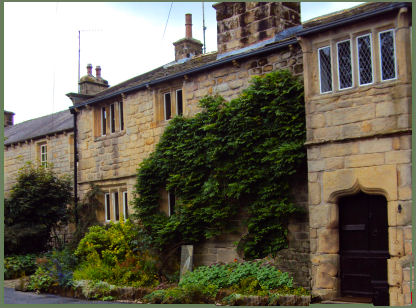
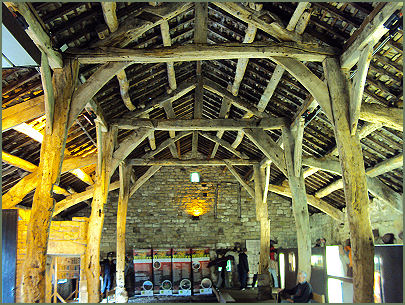
Clam Bridge is believed to be of neolithic origin and is listed as an Ancient Monument. It consists of just a long stone laid across the river. It was damaged by floods in 1989-90, though has now been repaired.Evidence in the form of flint arrow heads & scrapers show that man has lived close to Wycoller from the stone age.
An aisled barn in the village has been converted to a tourist information centre. The barn was built around 1650 using timbers from an earlier Cruck barn. The Craft centre housed in a former Shippon (cow shed/ dairy), has a traditional Victorian Tearoom selling refreshments, snacks and homemade meals and a gift shop.
Wycoller cottages and the Clapper Bridge
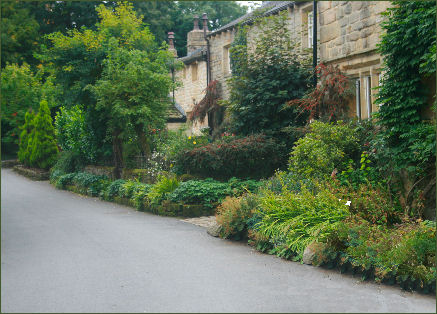
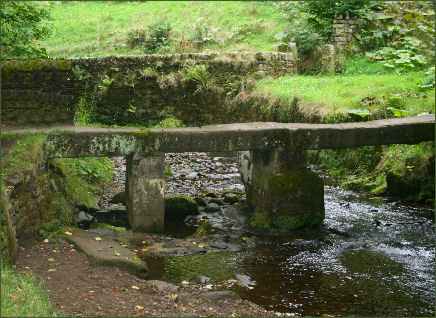
The Vaccary stone walls, which cross the hillsides around Wycoller are believed to have been built by the De Lacy family of Clitheroe Castle. Dating from around 1203, the large stones prevented cattle from straying.
Wycoller Hall
Wycoller Hall is thought to be the inspiration for Ferndean Manor (the home of Rochester) in Charlotte Bronte's novel 'Jane Eyre'. The Bronte family lived at nearby Haworth.
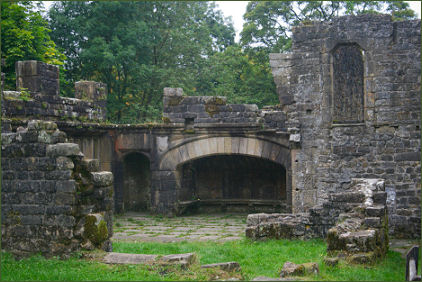
The manor-house of Ferndean was a building of considerable antiquity, moderate size, and no architectural pretensions, deep buried in a wood... Even when within a very short distance of the manor-house, you could see nothing of it, so thick and dark grew the timber of the gloomy wood about it. Iron gates between granite pillars showed me where to enter, and passing through them, I found myself at once in the twilight of close-ranked trees. There was a grass-grown track descending the forest aisle between hoar and knotty shafts and under branched arches." - from Jane Eyre.
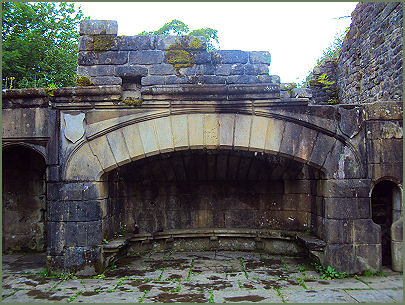
Built in 1550 by Piers Hartley, then a single-storey yeoman’s house, the hall was once the centre of a sizable estate, the Hartleys who were one of the greatest farming families in this part of Lancashire. It passed through marriage to the Cunliffe family in the early seventeenth century and was gradually improved and extended, the last of the direct Cunliffe line, Henry Owen Cunliffe, installed the grand fireplace and the 3 storey living area.
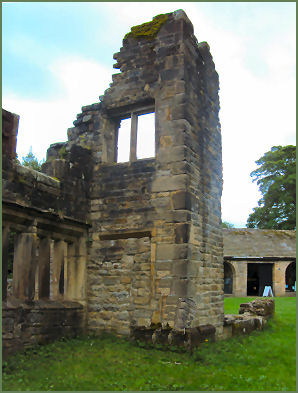
After the death in 1818 of Henry Owen Cunliffe, who left outstanding debts, the building was partly dismantled. Stone was later taken from the property to be used in other locations. Restoration work on Wycoller Hall began in 1950. The hall is said to be haunted by a spectre horseman, and a lady dressed only in black silk.
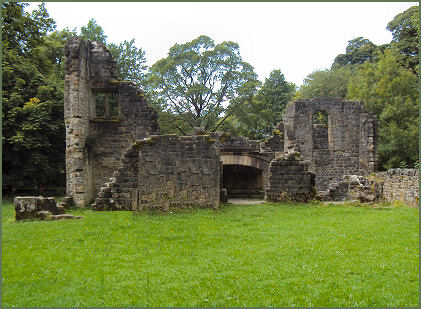
The Bronte Way, a 69km (43 mile) long distance footpath which starts at Oakwell Hall and ends at Gawthorpe Hall in Padiham, passes through Wycoller, leading to the Bronte sisters' home in Haworth.
A walk from Wycoller
Distance - around 5 miles
Duration - about 2 hours
*Commencing at the car park above Wycoller village (OS grid ref- SD 926395) Follow the footpath from the top of the car park, until arriving at a bend where the path joins the road, climb over the stile on the right and cross the field to reach a further stile, continue up to reach a gate and into a garden. Follow the arrow through the trees up the left side to and climb another stile. Bear right, crosing a stream, then left, continue to reach a footbridge and stile.
Follow the line of the hedge and then a wall, on reaching the end of the wall, bear a little to the right, continuing in the direction of Pendle Hill. On reaching a stile and signpost go slightly left, passing between two power line poles. On reaching a further stile and signpost, follow along the line of the wall and proceed along the walled track to Higher Stunstead. Pass buildings to enter into the yard.
* Turn left, cross a cattle grid then continue ahead to reach another stile and follow the stream up to Little Laith. On arriving at a large barn, follow arrows around the farm. Continue straight ahead to a stile by a gate, cross further stiles to reach Mean Moss. Proceed a few steps left up a track then follow the wall on your right to Beaver.
*Go slightly right crossing a field to a stile near the corner then up by the stream to a track. Turn left, then straight on above the wall and follow the sign for the Pendle Way sign. At a point where the wall turns sharp left, the track bends gradually down to another signpost. Go slightly left to a stile by a gate then proceed along the lower path, down towards the stream then up around woodland.
*On reaching a a kissing gate, descend to cross a stream, then follow the stream down to join a lane. Turn left down the lane to reach Wycoller Go left up the lane and retrace you steps to return to the car park.
Nearby Places of Interest
Whalley Abbey- founded by Henry de Lacy, third Earl of Lincoln on the 4th April 1296.
Lancaster Castle founded in the tenth century
Ashton Memorial in Williamson Park, Lancaster was commissioned by James Williamson, Baron Ashton as a tribute to his second wife, Jenny and was built between 1907 and 1909.
Butterfly House, Lancaster
Clitheroe Castle-Norman castle keep and museum, said to be one of the oldest buildings in Lancashire, and one of the smallest keeps in England,
